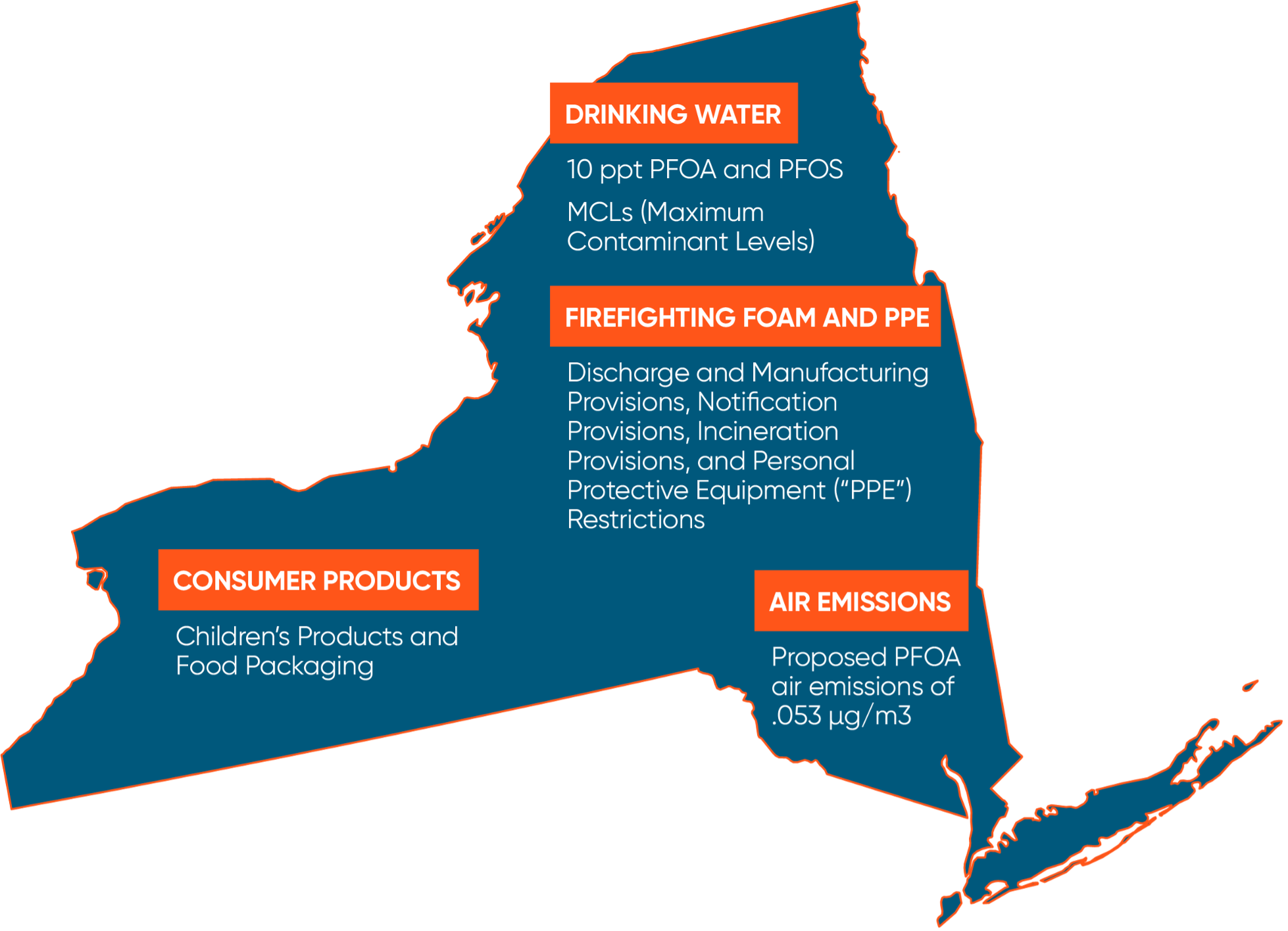BCLPemerging.com
PFAS State Snapshot: New York PFAS Regulation
Oct 15, 2021New York regulates per- and polyfluoroalkyl substances (“PFAS”) in drinking water, consumer products, firefighting foam, Personal Protective Equipment (“PPE”), and recently proposed the regulation of PFAS in air emissions.
In addition to the regulations described below, the New York State Department of Environmental Conservation (“DEC”) released proposed ground and surface water guidance values for Emerging Compounds for PFOA (6.7 ppt) and PFOS (2.6 ppt). The DEC will prioritize incorporation of these guidance values for PFOA and PFOS into industrial wastewater discharge permits from certain facilities, so impacted “priority industries” should consider whether a comment is warranted. Significantly, DEC’s proposed restrictions are intentionally more stringent than the drinking water Maximum Contaminant Levels (“MCLs”) that have already been enacted. The public comment period on the new proposed limits lasts until November 5, 2021.
This client alert reflects the status of PFAS regulations in New York as of October 14, 2021.

|
Drinking Water |
|
|
Summary: MCLs set concentration limits for contaminants in drinking water, and can potentially impact the sampling and discharge limits for individual facilities, as well as the clean-up standard both in publicly owned treatment works and in other drinking water systems. |
|
|
Title 10, Subpart 5-1 of the Official Compilation of Codes, Rules and Regulations
|
|
|
Food Packaging |
|
|
Summary: S 8817: Beginning on December 31, 2022, no person shall distribute or sell food packaging containing PFAS substances. |
|
|
Children’s Products |
|
|
Summary: A 6296A: Manufacturers are required to report all amounts of PFOA or PFOS in any children’s products to the DEC. |
|
|
Proposed Air Emissions |
|
|
Summary: This policy document regulates process emission sources, including equipment at manufacturing facilities throughout the state. |
|
|
6 NYCCR Part 212 |
|
|
Firefighting Foam and PPE |
|
|
Summary:
A 09952: Incineration of a certain type of firefighting foam shall be prohibited in a city with a population between 16,000 and 17,000 and in a region designated by the DEC as an environmental justice area. |
|
|
Release Notification Requirements |
|
|
Summary: Releases of a hazardous substance (including PFOS and PFOA) must be reported by an employee, agent, or representative of the person who has knowledge of the release to DEC’s Spill Hotline within two hours after discovery of the release. Notably, this would include releases of AFFF that contains PFAS. |
|
|
6 NYCRR 597 |
https://www.dec.ny.gov/docs/remediation_hudson_pdf/part597text.pdf |
|
PFOS and PFOA listed as Hazardous Substances |
|
For more information on PFAS chemicals, and the regulatory and litigation risks that they pose, please visit our PFAS webpage. If you have a question about how to manage PFAS risk in New York, or in any other jurisdiction, please contact Tom Lee, John Kindschuh, Dave Brankin or any other member of our PFAS team at Bryan Cave Leighton Paisner LLP.
Related Capabilities
-
PFAS
-
Environment




